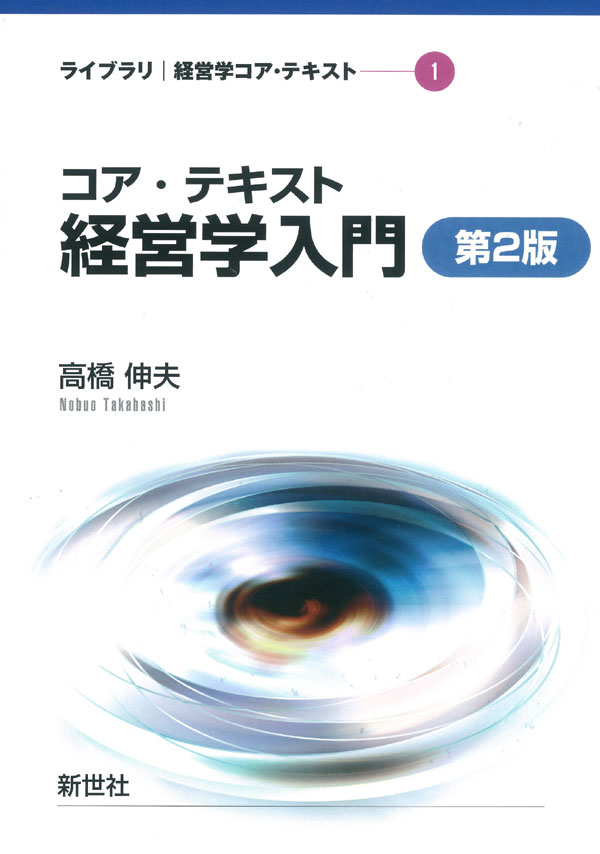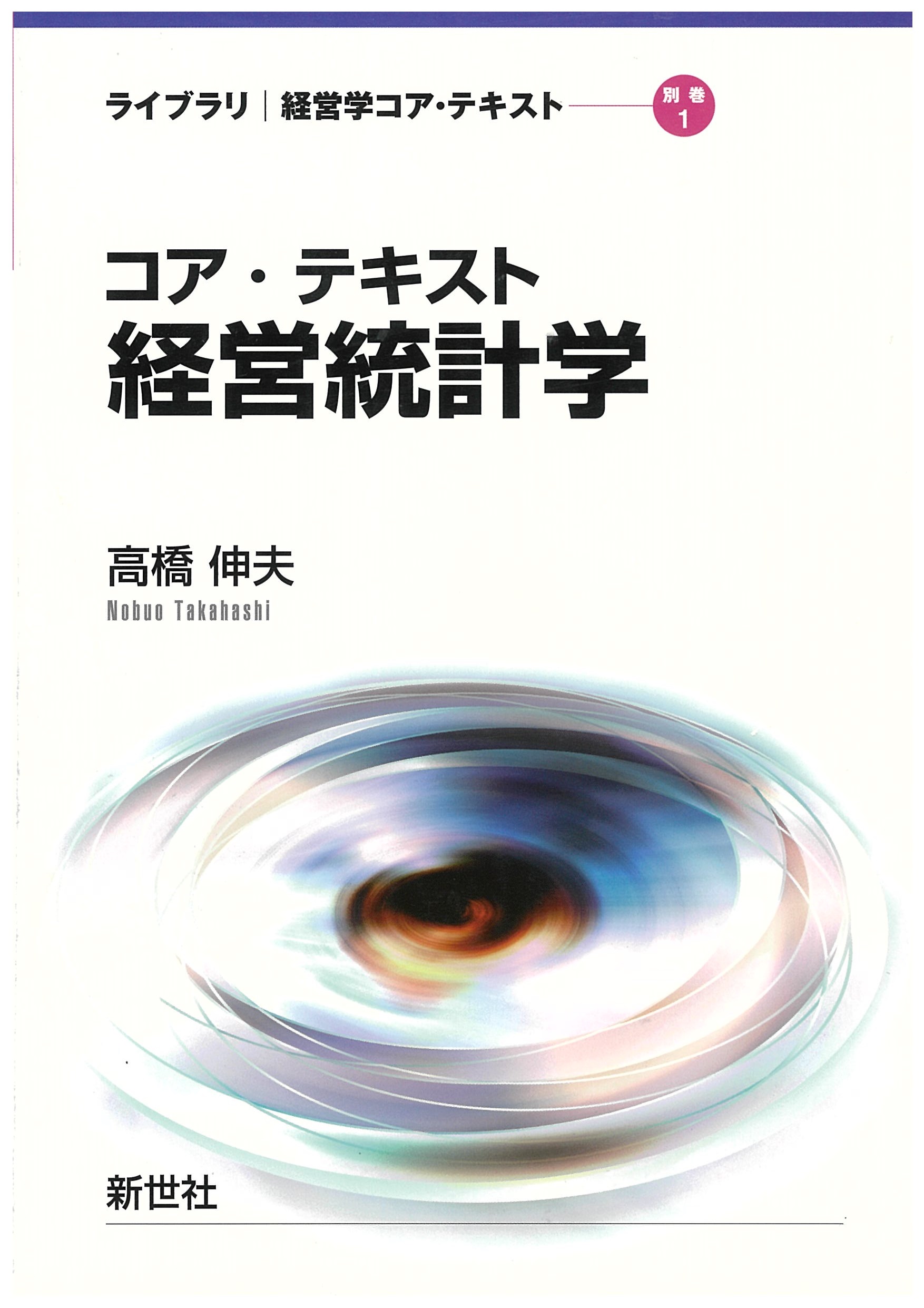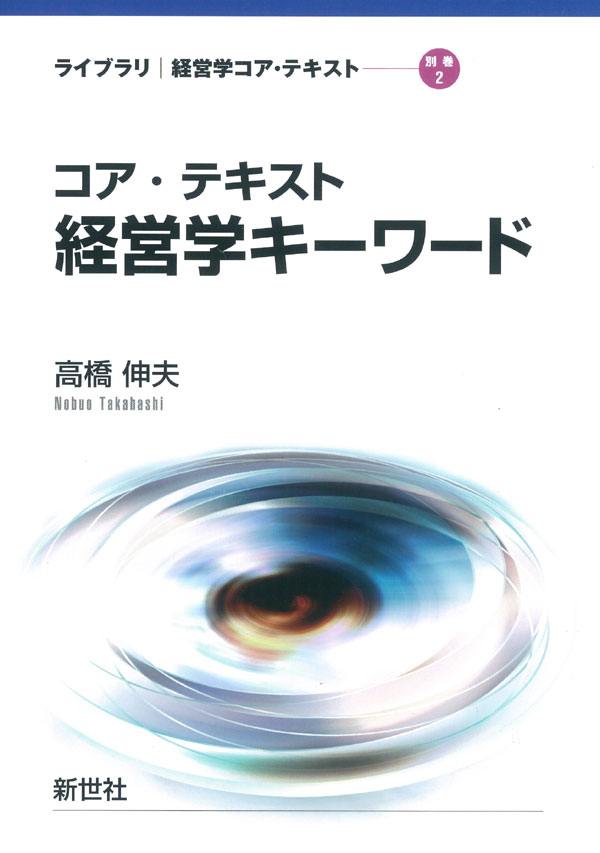
Title
Business Administration Core Text Library 1 Core Text: Keiei Gaku Nyumon (Core Text: Introduction to Business Administration - 2nd Edition)
Size
328 pages, A5 format, hardcover
Language
Japanese
Released
November 10, 2020
ISBN
978-4-88384-317-6
Published by
SHINSEI-SHA
Book Info
See Book Availability at Library
Japanese Page
The book is a completely new kind of introductory primer where every chapter starts with a familiar, everyday episode. Subsequently, various theories are explained based on the content of each episode. It is a book that allows readers the opportunity to view their various challenges as being problems of administration, and to acquire the methods to derive the answers to these challenges in their own minds.
To the best of my knowledge, the answers to problems of administration are almost always found on a case-by-case basis. Ultimately, you are forced to figure out what is wrong with your company through your own perspectives, and you have to produce the answer for yourself. The important thing, even if you are a university student, is “your own perspective”, something that each of us have. A collection of hints has been accumulated in the field of Business Administration to uncover problems and think about answers. If you try to read just one of the books on Business Administration listed in the “hints for challenges” section, you will discover the profundity and enjoyment of thinking as hard as possible. By reaching out, you will find that the field of Business Administration is within your grasp.
In reality, this book is inspired by a classic among classics in the field of Business Administration — C. I. Barnard's “The Functions of the Executive”, which is known for its esotericism. Excluding the last chapter, Chapter 18 – “The Conclusion”, this book, just like “The Functions of the Executive”, is written with an introduction and chapters 1–17, which faithfully reflect the introduction and chapters 1–17 from Barnard's book. The fact that this book is organized into four parts also mirrors “The Functions of the Executive”. Even the “Summary of Chapter X” at the end of every chapter of this book comes from “The Functions of the Executive”, which also featured a “Summary of Chapter X”.
In our partner book, “The Functions of the Executive”, there were almost no practical examples. By contrast, however, this book is centered around modern episodes which adapt fragments of the essence of the original book. To ensure that the story conceived and depicted by Barnard is not destroyed, academic developments (Many readers will be surprised that the sprouts of many of these developments were found in “The Functions of the Executive”) that followed Barnard have been placed in “hints for challenges” and removed from the text.
However, for those readers who have read “The Functions of the Executive”, may find it debatable. For both those high-level readers and young readers who become interested in reading Barnard after reading this book, an appendix named “Notes to Aid Understanding”, has been inserted at the end of the book to act as a bridge to understanding his work. I would like readers to use this as a guide when reading “The Functions of the Executive”, which is particularly famous within academia for its esotericism.
The 2007 original edition of the book has been reprinted, and I myself have adopted it as a text for undergraduate seminars many times. Having used it myself, I didn’t feel that there was much need to update it. However, since the publication of the first edition ten years ago, the field of Business Administration has been beset by an ongoing range of diverse problems. Additionally, there have also been some academic developments. Therefore, in the 2nd edition, in the section discussing challenges, the theories of organization, strategy, and marketing are expanded. Further, while taking up more recent issues in the field of Business Administration, such as corporate governance, commentary on the latest academic developments is elaborated upon through “hints for challenges”. I ended up making more revisions than I had envisaged. Lastly, it is printed in two colors, making it easy to read.
(Written by TAKAHASHI Nobuo, Professor, Graduate School of Economics / 2021)



 Find a book
Find a book



